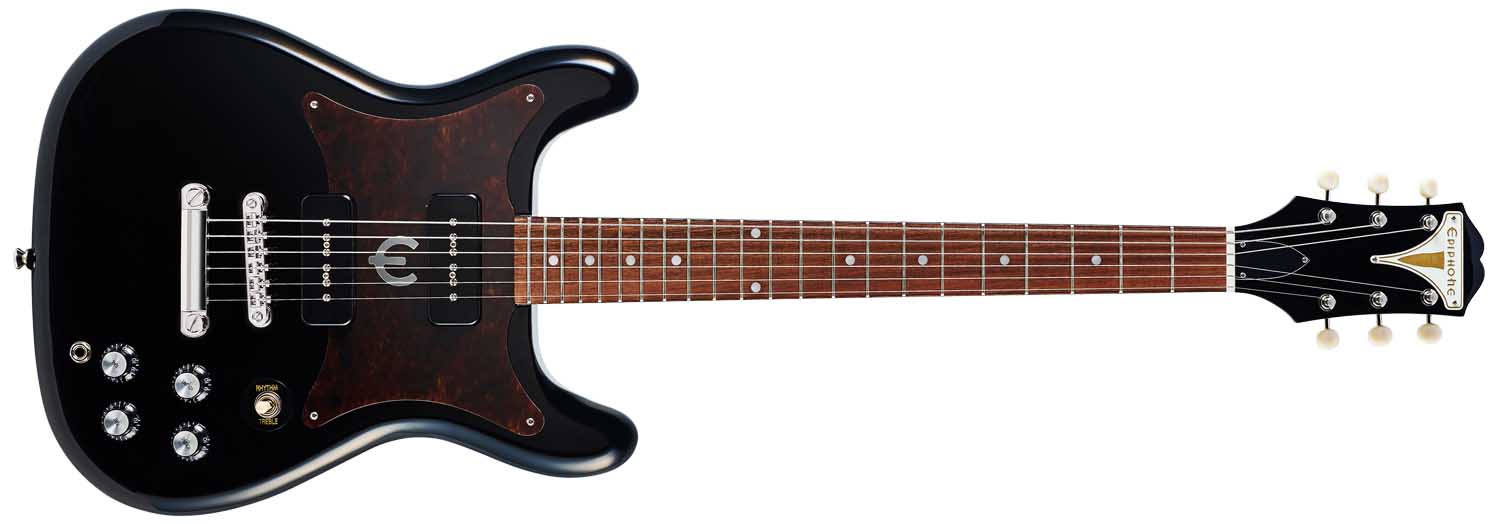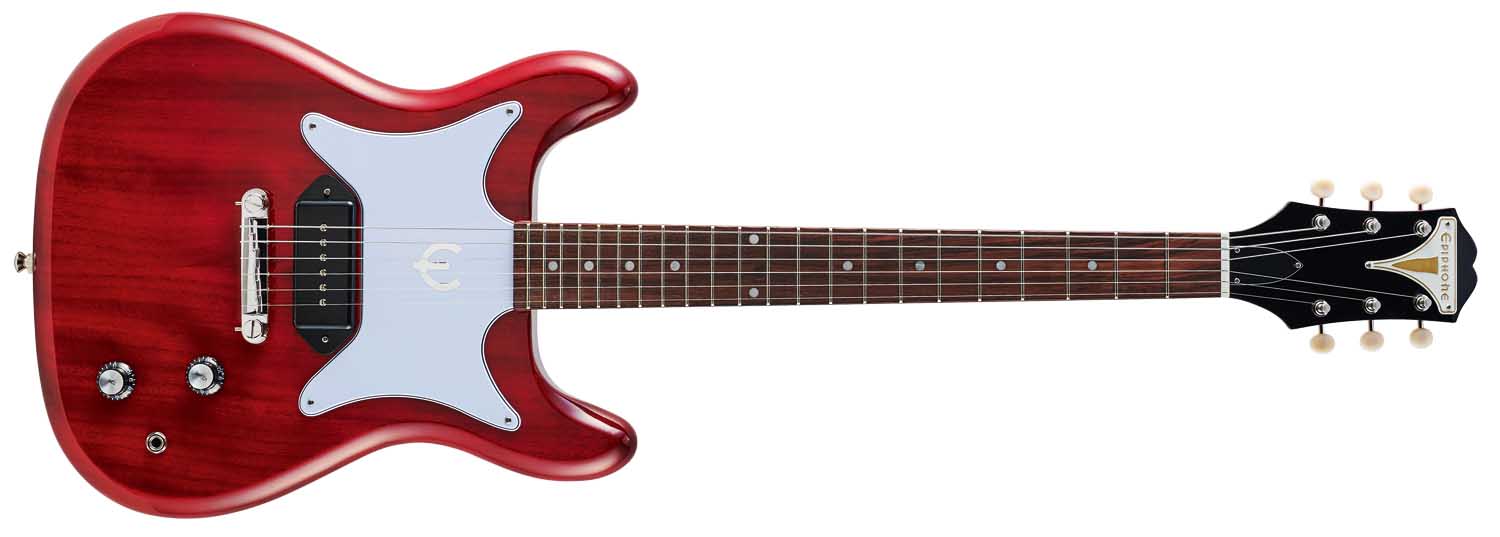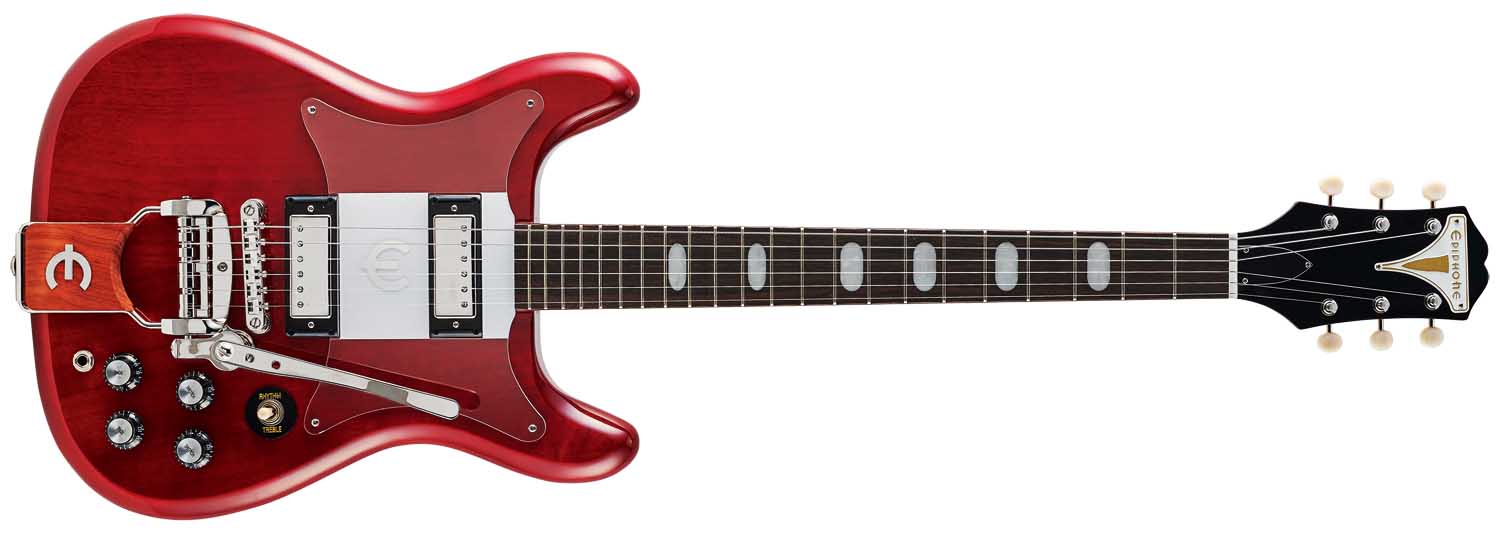MusicRadar Verdict
These three variations on the doublecut retro theme offer tremendous value and are just the sort of playable, super-cool electrics to give young players the vintage tone bug.
Pros
- +
From P-90's sizzle to mini-'bucker bite, tones are A+.
- +
All three a very playable.
- +
Can't argue with the price.
- +
The Crestwood's vibrato works a treat.
Cons
- -
Strap button position makes them a little unbalanced.
- -
No lefties.
MusicRadar's got your back
What is it?
Epiphone has been releasing hit after hit these past few months. From the hardy perennials such as the 50s Les Paul Standard and winsome Casino and Riviera hollowbodies, to the built-for-metal Prophecy range, the Gibson-owned brand is on a hot streak.
But we are not sure if the Gibson brand has released anything as cool as the three electric guitars we have before us today. In terms of looks, the vintage appeal of the Coronet, Wilshire and Crestwood Custom is hard to beat.
These models debuted towards the tail-end of the 50s, and share similar builds, with solid mahogany bodies with rounded edges, set mahogany necks and a vibe that suggested they were following in the fretwork of Gibsons stripped-down Junior and Special models. The Crestwood was launched in 1958, with the Coronet and its dual-pickup sibling Wilshire arriving a year or so later.
Coronet
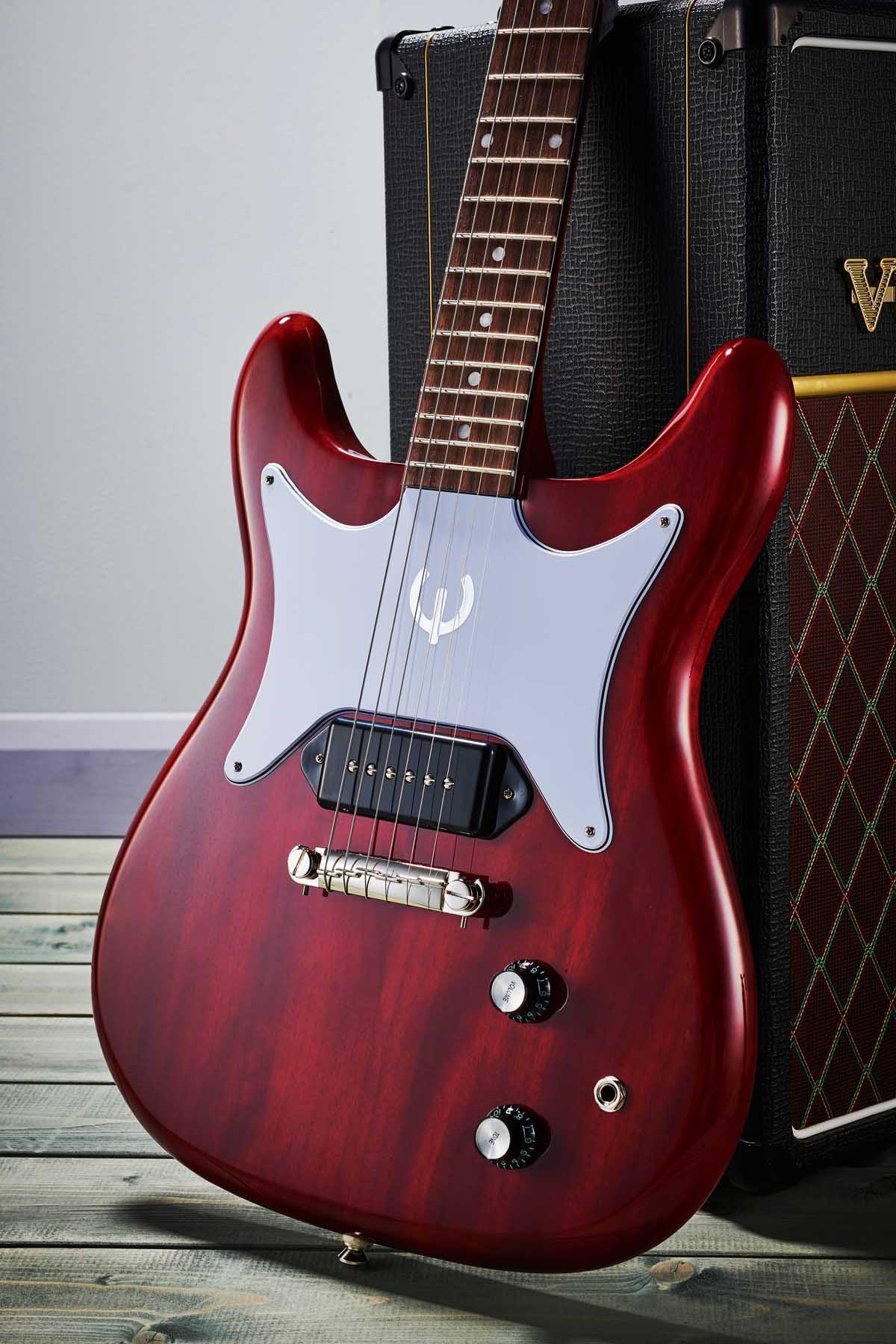


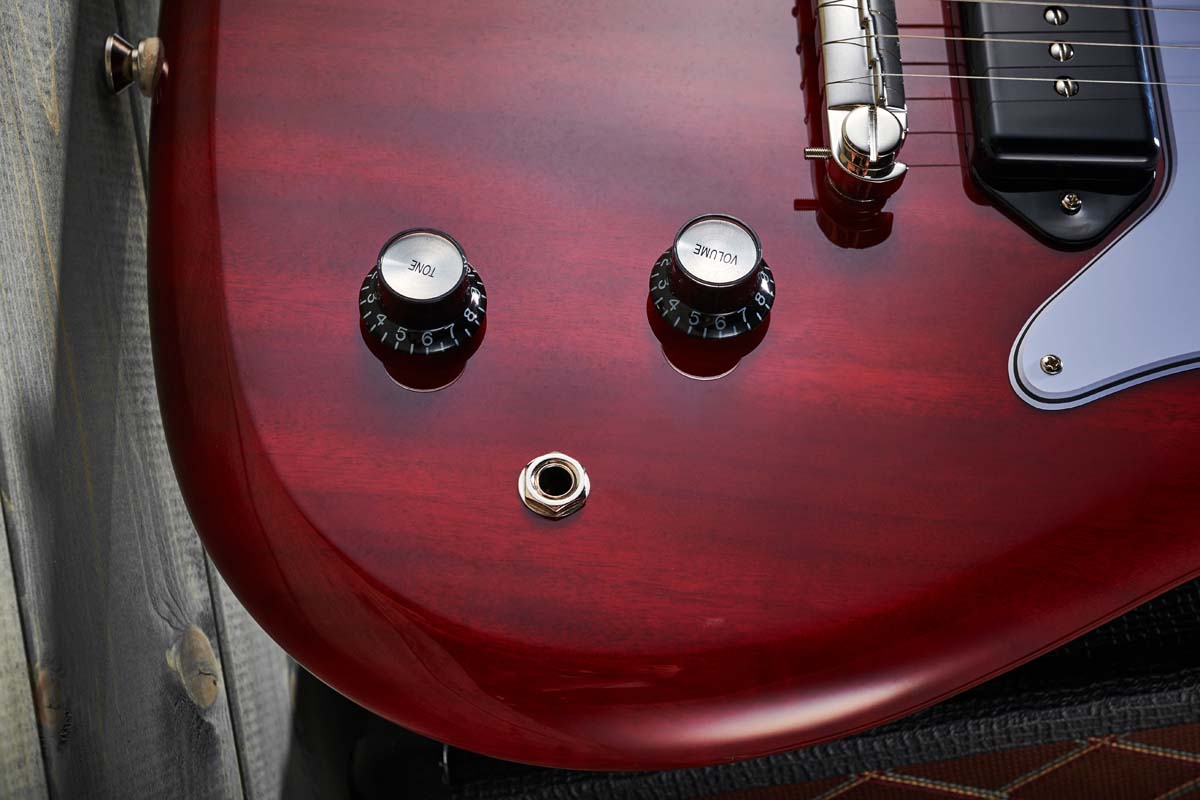
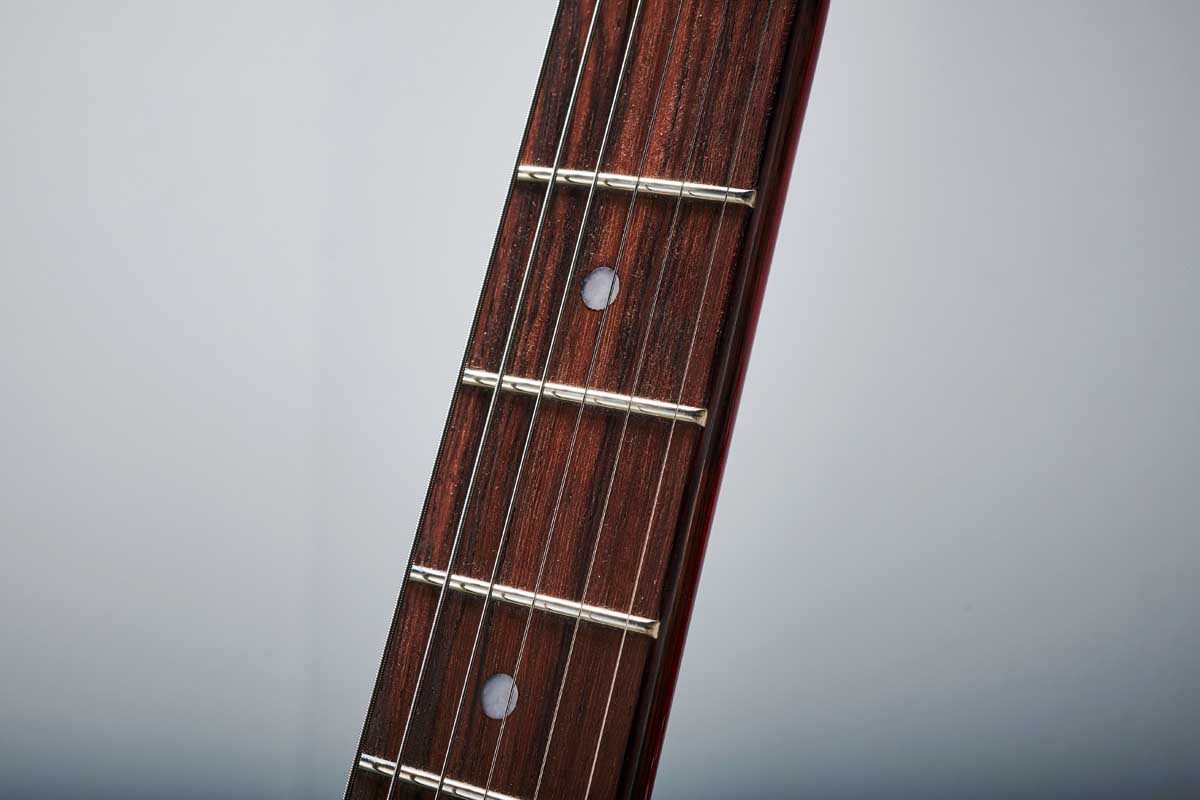
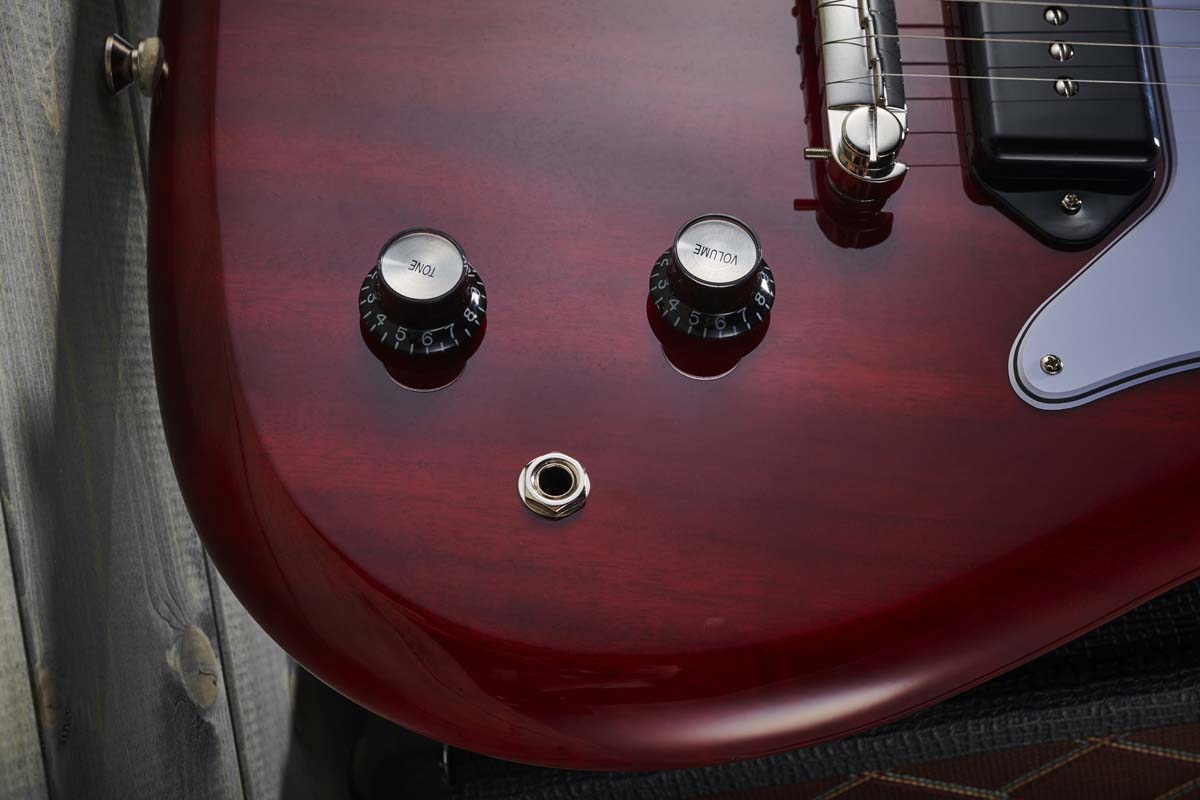
This was a heady time for guitar design. Spec came and went. The original models would undergo some changes right out of the gate. The original Coronets, for example, had an angled wraparound tailpiece, bikini headstock plate and crucially a New York single-coil pickup mounted close to the bridge.
Within a year or so, the single-coil was gone, a dog-ear P-90 in its place, and the headstock would feature a pearl Epiphone logo. The Crestwood, too, had early pickup change, its New York single-coil pairing replaced by Gibson's newly designed mini-humbucker. It was renamed the Crestwood Custom, and by 1961 it was equipped with a Tremtone vibrato.
While later versions of the three would see the squat open-book headstocks replaced by a six-a-side 'batwing'-style, these 21st-century reissues hew a little more closely to those early designs.
All three have the Epiphone badged plate, and are equipped with quality Kluson-esque tuners. If it wasn't for the Indian laurel on the fretboards, you might not even tell them apart. Well, that's if you can tell the difference. Under the fingers and in a certain light, laurel is pretty darn convincing.
Want all the hottest music and gear news, reviews, deals, features and more, direct to your inbox? Sign up here.
Wilshire

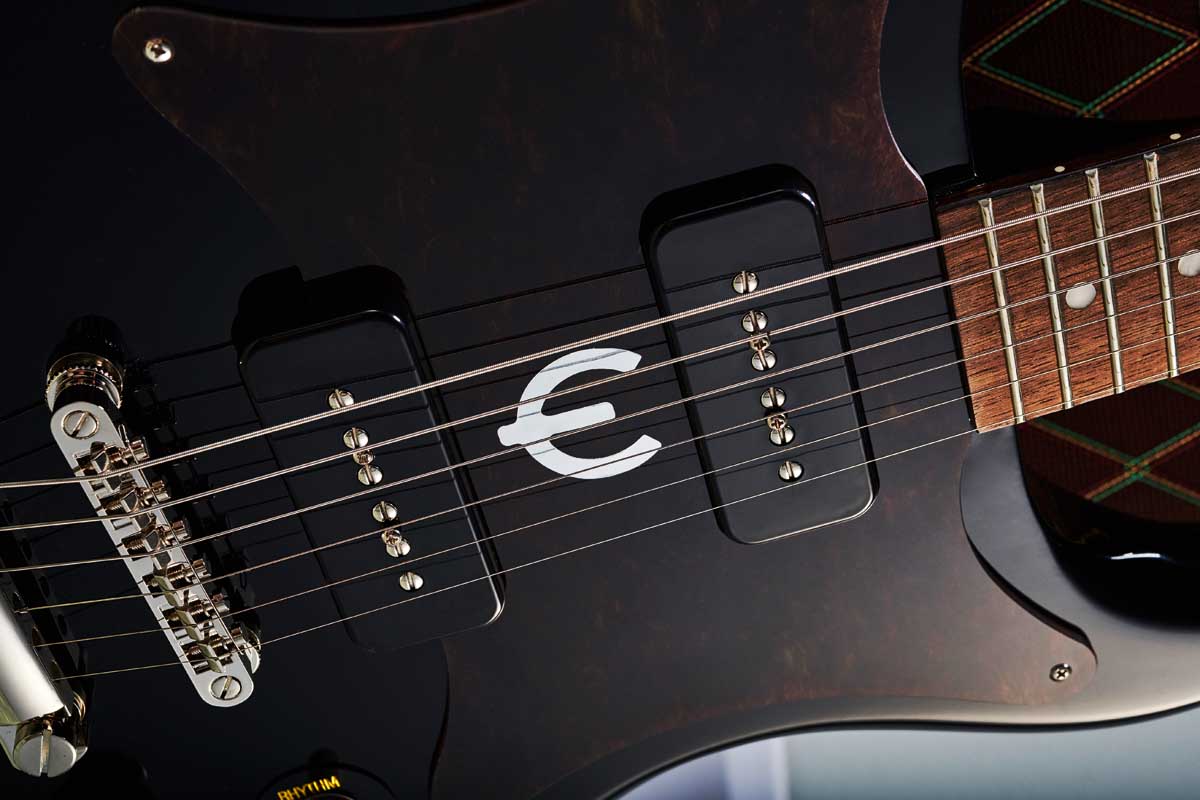


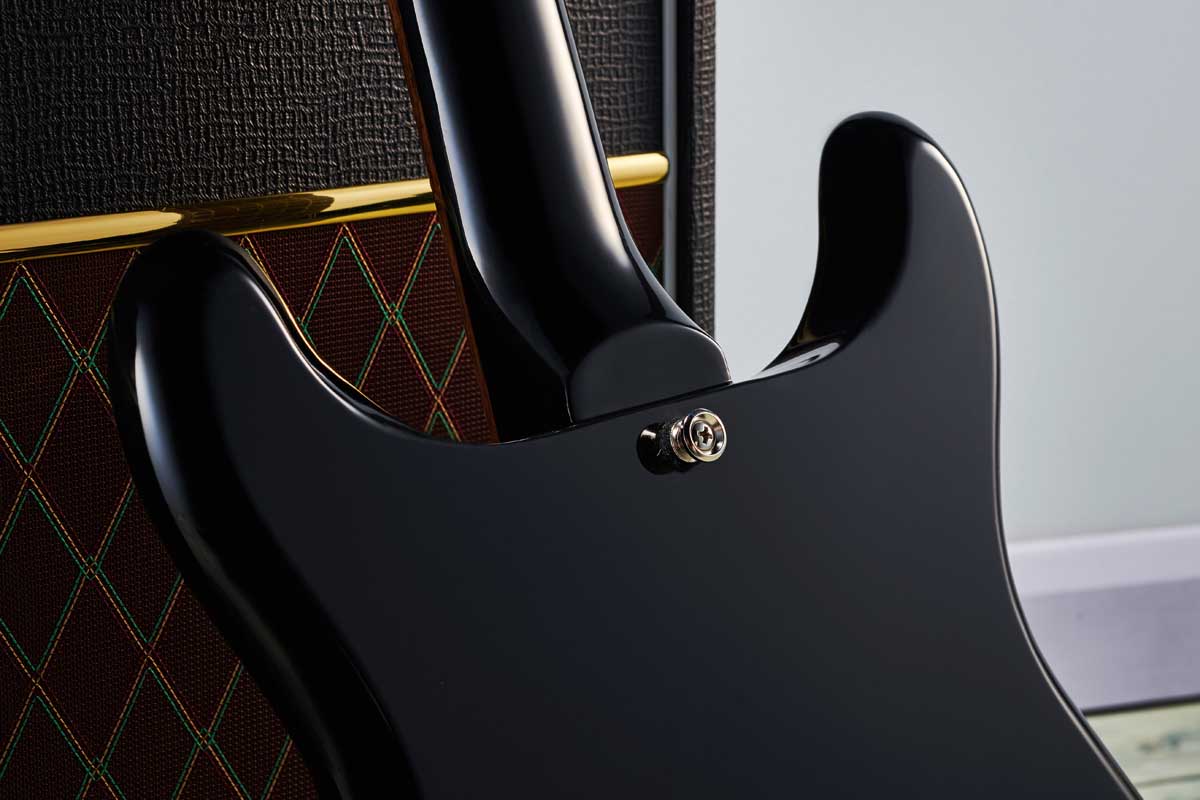
Aesthetically, they are bang on. With no maple caps an relatively slimmish bodies that heavily rounded at the edges and around the cutaways, these Epiphones are a nice weight. The extra metal needed for the vibrato makes the Crestwood Custom the the heaviest of the three, but even yet, it weighs in at a hair over 7lbs, well shy of many player's 8lb cut-off.
As for the other measurements, all three have a 43mm nut width and a 628mm (24.72”) scale length. The medium C neck profiles are of a piece with each other and are certainly not going to put off any players who have grown accustomed to the thinner patterns of contemporary electrics.
While the originals were built in Gibson's Kalamazoo plant, today's Epiphones are built in China, and the quality of the finishes is exceptional. Epiphone's preference for high-quality components like the Graph Tech NuBone nuts we have here, is elevating our expectations as to what a budget guitar should be.
Indeed, the Crestwood Custom, with its decorative tailpiece with Indian laurel insert, looks like a lot of guitar for the money – it's remarkable what you can get for under 500 bucks on today's market.
Crestwood Custom


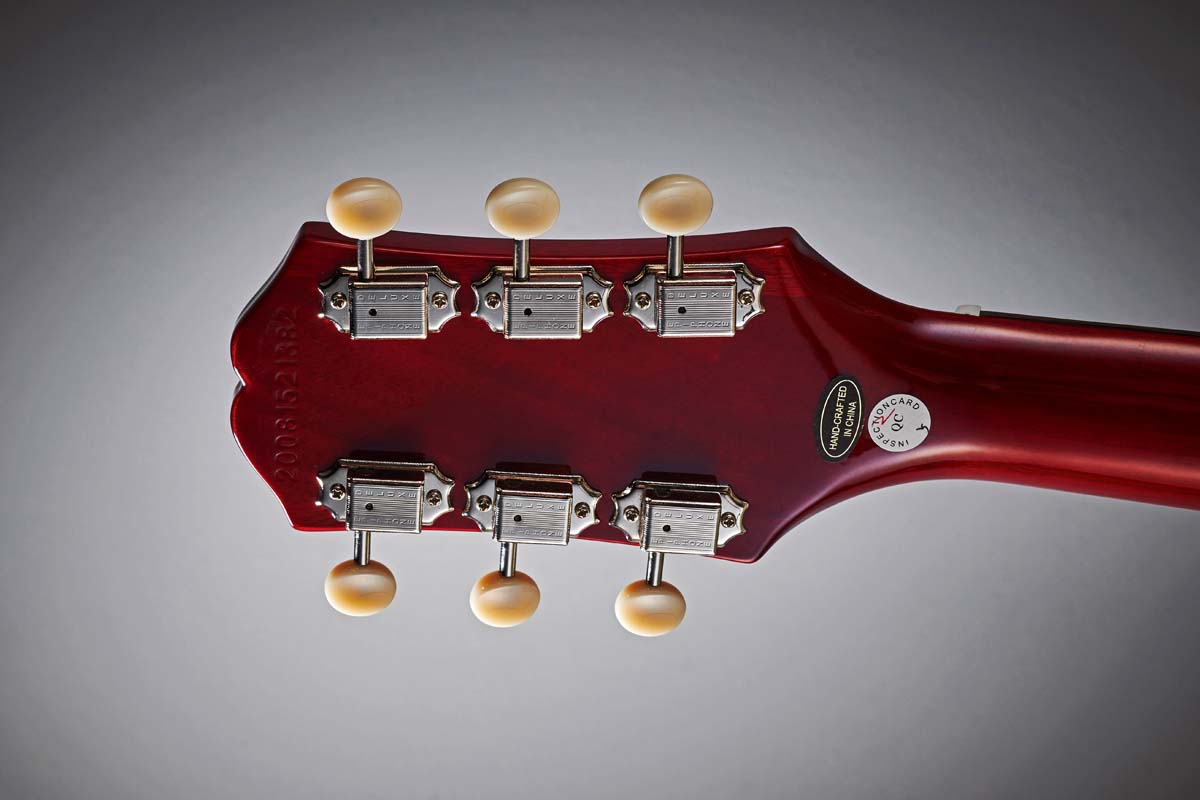

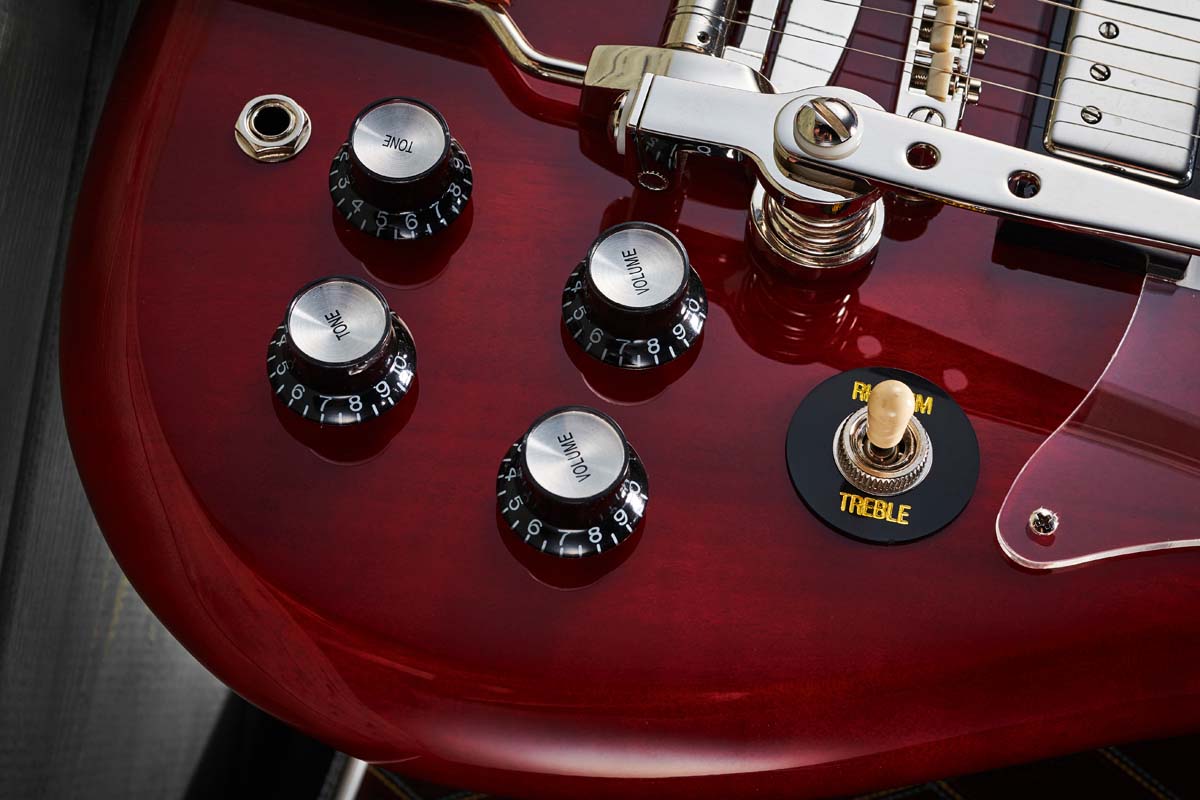
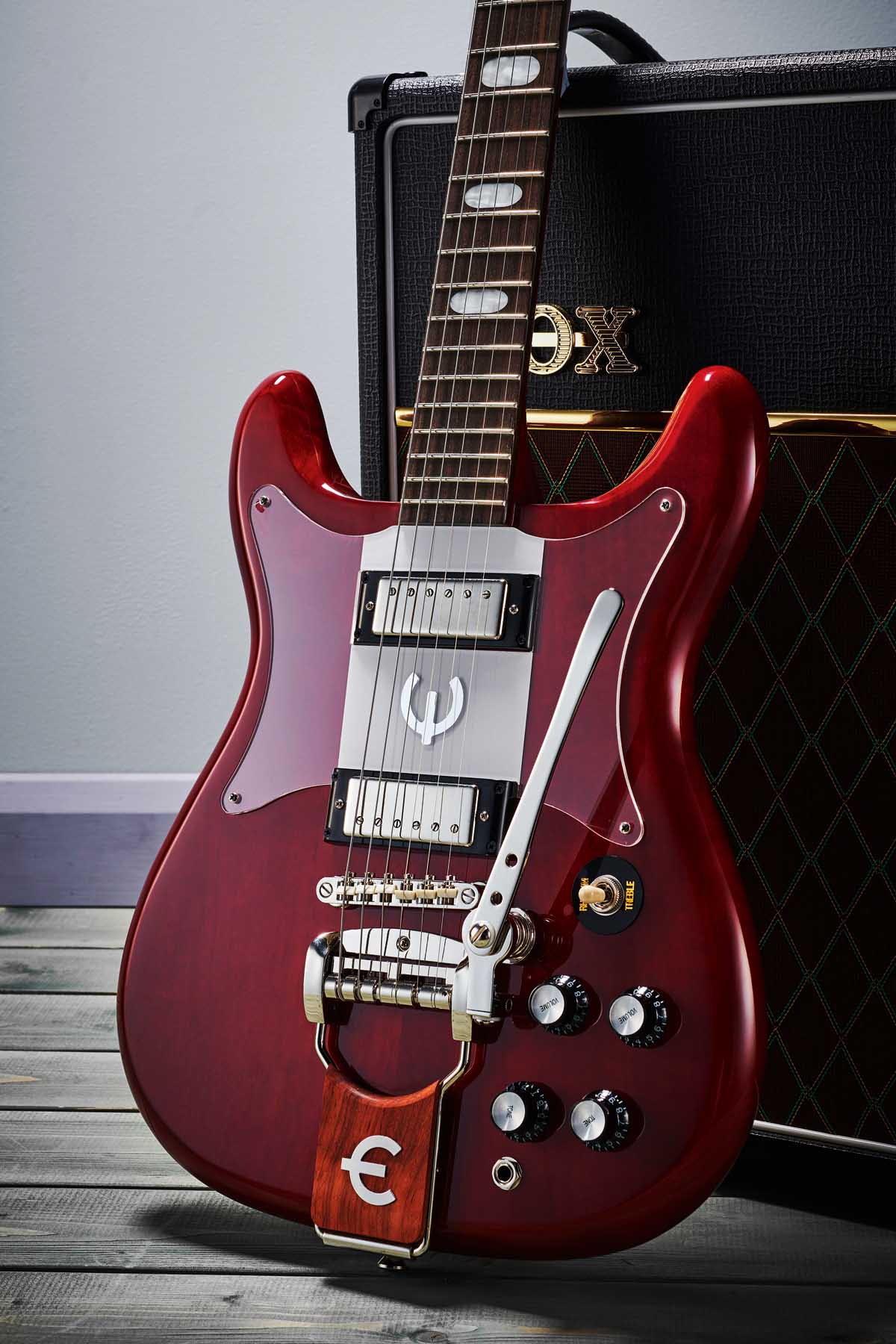
Performance and verdict
In terms of balance and feel, there is a consistency across all three models. That is to say that the medium C neck profile, with its pleasingly vanilla 21mm depth at the first fret and gentle taper, is going to be a crowdpleaser, and the medium-jumbo frets are well-dressed and find the right balance between vintage and modern.
Like the Gibson SG and its variants, the full 22-frets are available to the player, with the cutaways exposing all of that fretboard. Great for when you are on a mazy noodle up top, but it does make for a little bit of an imbalance when played standing with a strap. This is no big deal, and you could, of course, mount another strap button on the bass-side cutaway if you wanted to rectify it.
The Gibson scale length and the 12" fingerboard radius makes for a fun, easy ride, and what is particularly endearing about these guitars is that we are not entirely too sure who they are aimed at. They'd work well for indie players, for punks, for alt-rockers, but there's a real attitude in their voice that plays well for all kinds of styles. And the hot sizzle of a P-90 seated in a plank of solid mahogany? Well, that's always going to be fun for blues when played through a small tube combo.
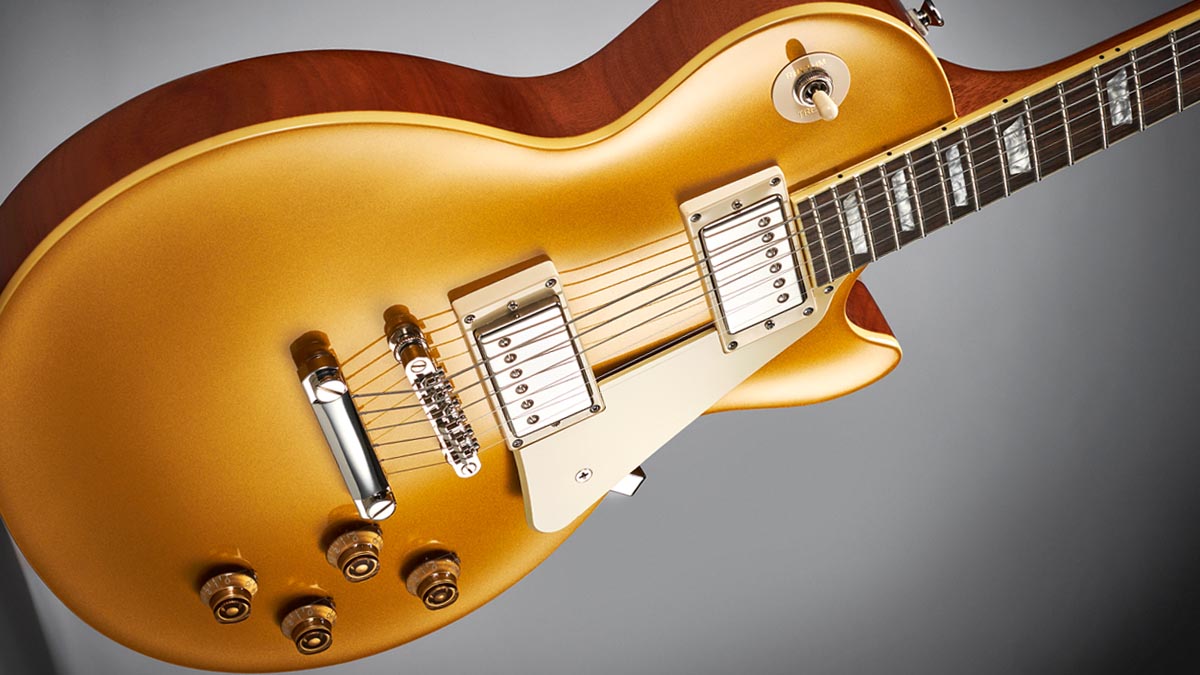
• Epiphone 50s Les Paul Standard
Epiphone gets the details right on this 50s Les Paul Standard. The tones sound authentically vintage. The feel and weight is right. And all this at a price that is impossible to argue with.
• Squier Paranormal Super-Sonic
An off-set eccentric with a reverse headstock, the Paranormal Super-Sonic is a very cool budget electric that strays beyond the usual electric guitar design archetypes. The quirks might be too much for some, but it's definitely got a supernatural charm to it.
It won't take long to fathom the Coronet's charms. Like the Junior, there's an instant gratification in playing it through a hot amp, enjoying a pickup that can deliver some sharp treble and upper mids but also enough heat and substance lest it sound brittle. One pickup is a nice limitation to have. It never restricted Leslie West. Those pining for a neck pickup can simply roll back the tone to take some of that high-end off.
It is as versatile as you make it. Run it through an overdriven amp, roll the volume back and it cleans up nicely. That gives you the option of having a clean-ish tone and something a little less housetrained for when the solo comes.
The Wilshire is cut from the same cloth, but with the added option of a neck pickup, there are some very useful tones for funk and blues and rock. The mix position is fun, too, a little like mixing poster paints, using two pickups in unison creates an all-new sound.

With its vibrato and mini-humbucker setup, the Crestwood Custom is a change of pace. The Tremtone vibrato is well-designed, with two additional wholes in the arm so you can set the pivot point for a stiffer action. That's very cool. But it is the mini-humbuckers that has our attention.
Gibson most notably use them on the Firebird and Les Paul Deluxe, while Epiphone have used them on the Sheraton and Riviera. They have an upfront and pugnacious clarity to them that makes them quite different propositions to their full-sized counterparts.
This top-end bias really pays off when playing with some overdrive or fuzz in the mix. The detail is right there. They are versatile, too. Plug the Crestwood Custom through a Tone Bender or similar and you can have an old-school Pete Townshend destruct-a-thon. Put them through a juiced Fender Deluxe and you've got a sound that's made for boogie-woogie and groovy slide playing.
All in all, these are a lot of fun. We love the simplicity of the Coronet – its pawnshop SG curio vibe is very charming, and yet the Wilshire's dual-pickup format expands upon this idea to good effect, likewise the Crestwood Custom, which just goes to show how the addition of a vibrato and a different set of pickups can transform a familiar chassis.
MusicRadar verdict: These three variations on the doublecut retro theme offer tremendous value and are just the sort of playable, super-cool electrics to give young players the vintage tone bug.
Hands-on demos
Guitarist
Specifications
Wiltshire
- PRICE: £399 / $449
- ORIGIN: China
- TYPE: Double-cutaway solidbody electric
- BODY: Mahogany with rounded edges
- NECK: Mahogany, medium C profile, glued-in
- SCALE LENGTH: 628mm (24.72”)
- NUT/WIDTH: Graph Tech NuBone/43mm
- FINGERBOARD: Indian laurel, unbound with pearloid dot inlays
- FRETS: 22, medium jumbo
- HARDWARE: Epiphone LockTone tune-o-matic bridge and stud tailpiece, Epiphone Deluxe tuners with ivory buttons
- STRING SPACING, BRIDGE: 52mm
- ELECTRICS: 2x Epiphone P-90 Pro ‘soapbar’, twin volume and tone controls, 3-way selector
- WEIGHT (kg/lb): 3.1/6.82
- OPTIONS: Colours only
- LEFT-HANDERS: No
- FINISHES: Cherry, Black (as reviewed)
Coronet
- PRICE: £349 / $399
- ORIGIN: China
- TYPE: Double-cutaway solidbody electric
- BODY: Mahogany with rounded edges
- NECK: Mahogany, medium C profile, glued-in
- SCALE LENGTH: 628mm (24.72”)
- NUT/WIDTH: Graph Tech NuBone/43mm
- FINGERBOARD: Indian laurel, unbound with pearloid dot inlays
- FRETS: 22, medium jumbo
- HARDWARE: Epiphone Lightning Bar compensated wraparound bridge/tailpiece, ‘3 On A Plate’ tuners with ivory buttons and press in bushings
- STRING SPACING, BRIDGE: 52mm
- ELECTRICS: Single Epiphone P-90 Pro ‘dog-ear’, single volume and tone controls
- WEIGHT (kg/lb): 3/6.6
- OPTIONS: Colours only
- RANGE OPTIONS: Wilshire and Crestwood Custom, as reviewed
- LEFT-HANDERS: No
- FINISHES: Cherry (as reviewed), Black
Crestwood Custom
- PRICE: £489 / $549
- ORIGIN: China
- TYPE: Double-cutaway solidbody electric
- BODY: Mahogany with rounded edges
- NECK: Mahogany, medium C profile, glued-in
- SCALE LENGTH: 628mm (24.72”)
- NUT/WIDTH: Graph Tech NuBone/43mm
- FINGERBOARD: Indian laurel, unbound with large oblong inlays
- FRETS: 22, medium jumbo
- HARDWARE: Epiphone LockTone tune-o-matic bridge w/ nylon saddles, Tremotone vibrato tailpiece with Indian laurel insert, Epiphone Deluxe Vintage tuners with ivory buttons
- STRING SPACING, BRIDGE: 52mm
- ELECTRICS: 2x Epiphone Pro mini-humbuckers, twin volume and tone controls, 3-way selector
- WEIGHT (kg/lb): 3.2/7.04
- OPTIONS: Colours only
- LEFT-HANDERS: No
- FINISHES: Cherry (as reviewed), Polaris White
- CONTACT: Epiphone
MusicRadar is the number one website for music-makers of all kinds, be they guitarists, drummers, keyboard players, DJs or producers...
- GEAR: We help musicians find the best gear with top-ranking gear round-ups and high-quality, authoritative reviews by a wide team of highly experienced experts.
- TIPS: We also provide tuition, from bite-sized tips to advanced work-outs and guidance from recognised musicians and stars.
- STARS: We talk to musicians and stars about their creative processes, and the nuts and bolts of their gear and technique. We give fans an insight into the craft of music-making that no other music website can.

